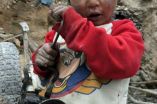(Press-News.org) Labour conditions, the amount of hours and working during the morning are the factors that most negatively affect the academic development of children who work. Using data from the 'Edúcame primero Colombia' Project ('Educate me first Colombia' in Spanish), a group of researchers in which the University of Seville participates has confirmed the incompatibility between studying and child labour.
The International Labour Organisation states that, in 2010, approximately 215 million children across the world were working. This figure has been progressively decreasing in Asia, the Pacific, Latin America and the Caribbean especially with regards to jobs that are considered hard and dangerous carried out by the youngest children. However, according to the organisation, the number of workers between the age of 15 and 17 years has increased in the last five years.
Numerous studies have demonstrated that working and the academic development of minors are incompatible.
Now, an international study analysing the situation of 3,302 children in Colombia states that there are three especially important factors that condition academic results: working conditions, the number of hours worked in a day and working during the morning.
In Colombia, youngsters are allowed to work after the age of 15 years providing that their parents or legal guardians file for permission from a labour inspector. Between the ages of 15 and 17 years, they can only work six hours a day during a day shift and up to 30 hours a week.
According to a survey from Colombia's National Administrative Department of Statistics, DANE, in the last quarter of 2011, the country's child labour rate stood at 12%. Amongst 15 to 17 years old, this figure reached 27.7%.
Against this backdrop, the researchers interviewed 3,302 families that had a son or daughter participating in the "Edúcame Primero Colombia" programme, headed by the United States Department of Labour and the Ministry for Social Protection of the Republic of Colombia.
The average child worker is 9 years of age
It was generally the mother who answered the questions. In total, there were 1,453 girls and 1,849 boys, with an average age of 9 years.
"At first we only interviewed the families, who acted as the source of information on the family, labour and education situation of the children," as explained to SINC by Isidro Maya-Jariego from the University of Seville and coauthor of the study.
The researcher explained how the interviews aimed to evaluate the sociodemographic and economic variables of families as well as the education and labour characteristics and conditions of the minors.
These included work conditions and type, hours worked on a daily or weekly basis and the age the child started working.
The fact that child labour has a negative influence on academic development is not new knowledge for the researchers.
However, following their project, they observed that certain aspects have more of a conditioning influence than others.
Physical and psychological risks
First, the type of work and exposure to situations that imply a physical or psychological risk had a negative impact on the academic results of the children.
Measured by the time it takes up the working day, intensity appears in the study as an important conditioning factor. As for the number of hours worked during the week, "this negatively affects academic results since, compared to the work of adults, child labour is very irregular and on occasions the tasks involved in helping out at home can arise suddenly at any given moment," according to the study.
Lastly, working in the morning means that school has to compete more, since "they both clash and, in many cases, lead to youngsters dropping out of school."
Help needed in the family business
The results showed that 90% of children knew how to read and write and that in 65.7% of cases, children left school to help with the family business.
Likewise, becoming a parent at an early age, the need to fulfil family responsibilities and the high cost of education are other reasons for dropping out of school.
This study expands upon the relationship between child labour and academic advancement – something far from being simple given the clear competition between the two.
According to the researcher, "it is important to analyse the specific impact that child labour has on education in the context of their development."
In the future, "it would be interesting to include other variables that reflect the academic results in a more holistic way, such as the experience of the child in terms of the educational surroundings," concludes the researcher.
These types of studies allow more adequate intervention in eradicating child labour in those affected areas and the characteristics of work undertaken by children.
INFORMATION:
Confirmation that studying and child labor are incompatible
2012-12-13
ELSE PRESS RELEASES FROM THIS DATE:
More than 200 genes identified for Crohn's Disease
2012-12-13
More than two hundred gene locations have now been identified for the chronic bowel condition Crohn's Disease, in a study that analysed the entire human genome.
Published today in The American Journal of Human Genetics, scientists at UCL have devised a new method for identifying and mapping gene locations for complex inherited diseases. Using this method, they have been able to identify a large number of additional genes for Crohn's Disease, making a total of more than 200, which is more than have been found for any other disease. For example, there are just 66 known ...
In media coverage of nursing homes, negative stories predominate
2012-12-13
Philadelphia, Pa. (December 13, 2012) – Analysis of media portrayals of nursing homes finds that negative stories outnumber positive stories by five to one, reports a study in the December issue of Medical Care. The journal is published by Lippincott Williams & Wilkins, a part ofWolters Kluwer Health.
Negative news coverage of nursing homes may shape public perceptions and consumer care choices, suggest Edward Alan Miller, PhD, MPA, of University of Massachusetts Boston and Denise A. Tyler, PhD, of Brown University. They write, "Our findings suggest that negative reporting ...
Stem cell 'sticky spots' recreated by scientists
2012-12-13
Randomly distributed sticky spots which are integral to the development of stem cells by maximising adhesion and acting as internal scaffolding have been artificially recreated by experts from the University of Sheffield for the first time.
Using synthetic foam type materials to mimic the natural process – known as the extracellular matrix or ECM – scientists, from the University of Sheffield and University of California San Diego, created the random stickiness required for stem cells to properly adhere.
The findings will better inform researchers across the world of ...
Study helps bridge gap in understanding of suicide risk for African-American women
2012-12-13
WASHINGTON, DC, December 13, 2012 — Three University of Kentucky (UK) sociologists have co-authored a study that helps to fill a gap in our understanding of suicide risk among African-American women.
Appearing in the December issue of Social Psychology Quarterly (SPQ), the study, "Too Much of a Good Thing? Psychosocial Resources, Gendered Racism, and Suicidal Ideation among Low Socioeconomic Status African American Women," examines the relationship between racial and gender discrimination and suicidal ideation, or thinking about and desiring to commit suicide. The co-authors ...
Head-mounted cameras could help robots understand social interactions
2012-12-13
PITTSBURGH—What is everyone looking at? It's a common question in social settings because the answer identifies something of interest, or helps delineate social groupings. Those insights someday will be essential for robots designed to interact with humans, so researchers at Carnegie Mellon University's Robotics Institute have developed a method for detecting where people's gazes intersect.
The researchers tested the method using groups of people with head-mounted video cameras. By noting where their gazes converged in three-dimensional space, the researchers could determine ...
Aerobic exercise boosts brain power
2012-12-13
Their review is published online in the Springer publication, Psychonomic Bulletin and Review.
A certain amount of mental deterioration is expected with advancing age. However, this may not necessarily have to be the case as particular aspects of cognitive function such as task switching, selective attention and working memory among others, all appear to benefit from aerobic exercise. Studies in older adults reviewed by the authors consistently found that fitter individuals scored better in mental tests than their unfit peers. In addition, intervention studies found scores ...
No more lying about your age: Scientists can now gauge skin’s true age with new laser technique
2012-12-13
Wrinkles, dryness, and a translucent and fragile appearance are hallmarks of old skin, caused by the natural aging of skin cells. But while most of us can recognize the signs of lost youth when we peer into the mirror each morning, scientists do not have a standardized way to measure the extent of age damage in skin. Now a group of Taiwanese researchers has used a specialized microscope to peer harmlessly beneath the skin surface to measure natural age-related changes in the sizes of skin cells. The results, which are published in the Optical Society's (OSA) open-access ...
12 matter particles suffice in nature
2012-12-13
This press release is available in German.
How many matter particles exist in nature? Particle physicists have been dealing with this question for a long time. The 12 matter particles contained in the standard model of particle physics? Or are there further particles with too high a mass to be produced by the experiments performed so far? These questions are now answered by researchers of KIT, CERN, and Humboldt University in the current issue of the Physical Review Letters. (DOI: 10.1103/PhysRevLett.109.241802)
Matter particles, also called fermions, are the elementary ...
Study sheds light on how cells transport materials along crowded intercellular 'highways'
2012-12-13
Worcester, Mass. – The interior of an animal cell is like a small city, with factories—called organelles—dedicated to manufacturing, energy production, waste processing, and other life functions. A network of intercellular "highways," called microtubules, enables bio-molecular complexes, products, and other cargo to move speedily about the cell to keep this vital machinery humming. A new paper published online in the journal Proceedings of the National Academy of Sciences sheds new light on how cells manage to keep traffic flowing smoothly along this busy transportation ...
Your Christmas tree and its genome have remained very much the same over the last 100 million years
2012-12-13
This press release is available in French.
Quebec City, December 13, 2012—A study published by Université Laval researchers and their colleagues from the Canadian Forest Service reveals that the genome of conifers such as spruce, pine, and fir has remained very much the same for over 100 million years. This remarkable genomic stability explains the resemblance between today's conifers and fossils dating back to the days when dinosaurs roamed the Earth. Details of this finding are presented in a recent issue of the journal BMC Biology.
The team supervised by Professor ...



